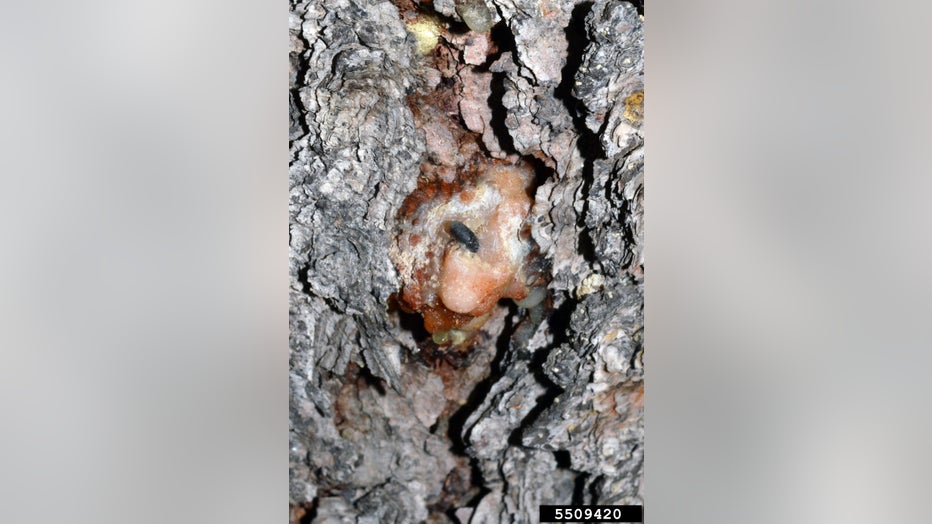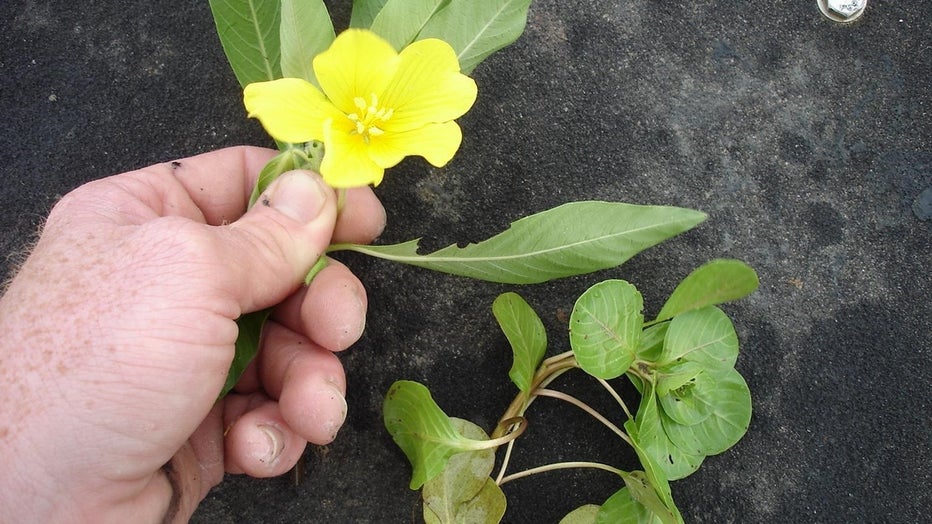Mountain pine beetle and water-primrose among invasive species to look out for
(FOX 2) - The Michigan Department of Natural Resources' fight against invasive species has been taken up a notch with the addition of two more species to their watch list.
Water-primrose, a fast-spreading aquatic plant, and the mountain pine beetle, which poses a deadly threat to pine trees, have been added to the watch list due to the risk they pose to both native ecosystems and industry.
If anyone spots these species, they're asked to snap a photo and report them to an online invasive species tool here.
See photos of them below.
The mountain pine beetle
The mountain pine beetle is known to be the most destructive bark beetle in the western United States and Canada. Its population has grown rapidly due to hot, dry summers and mild winters in these regions, causing it to expand its range and approach Michigan.
The beetle's ability to attack a variety of pine species means that it could have a significant impact throughout the state if it becomes established.
"White and red pines are primary species in our forest ecosystems, and jack pine serves as critical habitat for the Kirtand’s warbler," said Susie Lott, invasive species program specialist with the Michigan Department of Agriculture and Rural Development. "If mountain pine beetle were to become widely established in Michigan, it would cause severe losses across multiple industries, including timber products, plant nurseries and tourism."

The tiny, invasive mountain pine beetle, seen here on a pitch tube, could be a threat to Michigan's forests if it arrives. Photo courtesy of William M. Ciesla Forest Health Management International Bugwood.org
Water-primrose
Water-primrose is a highly invasive group of non-native plants that often forms dense mats in wetland ecosystems.
These mats outcompete native species and make boating and water access challenging.
Despite harsh winter conditions, three Michigan populations have demonstrated the species' ability to thrive in the state's climate. Early detection is critical, as water-primrose can be difficult to remove once established.

A five-petaled yellow flower and pointed leaves are characteristics of the invasive aquatic water-primrose species. Photo courtesy of Graves Lovell, Alabama Dept. of Conservation and Natural Resources, Bugwood.org
"Water-primrose is not a regulated species in Michigan. Though not common in trade, it was likely introduced through the landscape or water garden pathway," said Bill Keiper, aquatic biologist with the Department of Environment, Great Lakes, and Energy. "Several Ludwigia species are common in trade but are not invasive and look much different than water-primrose."

